
The McDonnell Douglas DC-10 is an American trijet wide-body aircraft manufactured by McDonnell Douglas. The DC-10 was intended to succeed the DC-8 for long-range flights. It first flew on August 29, 1970; it was introduced on August 5, 1971, by American Airlines.

Turkish Airlines Flight 981 (TK981/THY981) was a scheduled flight from Istanbul Yeşilköy Airport to London Heathrow Airport, with an intermediate stop at Orly Airport in Paris. On 3 March 1974, the McDonnell Douglas DC-10 operating the flight crashed into the Ermenonville Forest, outside Paris, killing all 346 people on board. The crash was also known as the Ermenonville air disaster. Flight 981 was the deadliest plane crash in aviation history until 27 March 1977, when 583 people perished in the collision of two Boeing 747s in Tenerife. It remained the deadliest single-aircraft accident until the crash of Japan Airlines Flight 123 on 12 August 1985, and the deadliest aviation accident without survivors until the Charkhi Dadri mid-air collision on 12 November 1996. It remains the deadliest single-aircraft accident without survivors, the second hull loss and the deadliest accident involving the McDonnell Douglas DC-10, the sixth deadliest aviation disaster altogether, and the deadliest aviation accident to occur in France. It is also the deadliest aviation incident that did not involve a Boeing 747.

United Airlines Flight 232 was a regularly scheduled United Airlines flight from Stapleton International Airport in Denver to O'Hare International Airport in Chicago, continuing to Philadelphia International Airport. On July 19, 1989, the DC-10 serving the flight crash-landed at Sioux Gateway Airport in Sioux City, Iowa, after suffering a catastrophic failure of its tail-mounted engine due to an unnoticed manufacturing defect in the engine's fan disk, which resulted in the loss of many flight controls. Of the 296 passengers and crew on board, 112 died during the accident, while 184 people survived. 13 of the passengers were uninjured. It was the deadliest single-aircraft accident in the history of United Airlines.

The Pratt & Whitney PW4000 is a family of dual-spool, axial-flow, high-bypass turbofan aircraft engines produced by Pratt & Whitney as the successor to the JT9D. It was first run in April 1984, was FAA certified in July 1986, and was introduced in June 1987. With thrust ranging from 50,000 to 99,040 lbf, it is used on many wide-body aircraft.
An uncontrolled decompression is an undesired drop in the pressure of a sealed system, such as a pressurised aircraft cabin or hyperbaric chamber, that typically results from human error, structural failure, or impact, causing the pressurised vessel to vent into its surroundings or fail to pressurize at all.

American Airlines Flight 96 (AA96/AAL96) was a regular domestic flight operated by American Airlines from Los Angeles to New York via Detroit and Buffalo. On June 12, 1972, the left rear cargo door of the McDonnell Douglas DC-10-10 operating the flight blew open and broke off en route between Detroit and Buffalo above Windsor, Ontario; the accident is thus sometimes referred to as the Windsor incident, although according to the NTSB it is an accident, not an incident.
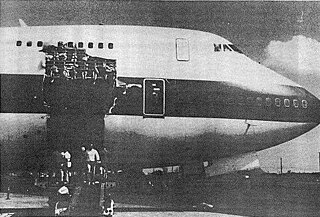
United Airlines Flight 811 was a regularly scheduled airline flight from Los Angeles to Sydney, with intermediate stops at Honolulu and Auckland. On February 24, 1989, the Boeing 747-122 serving the flight experienced a cargo-door failure in flight shortly after leaving Honolulu. The resulting explosive decompression blew out several rows of seats, killing nine passengers. The aircraft returned to Honolulu and landed without further incident.

Southern Airways Flight 242 was a flight from Muscle Shoals, Alabama, to Atlanta, Georgia, with a stop in Huntsville, Alabama. On April 4, 1977, it executed a forced landing on Georgia State Route 381 in New Hope, Paulding County, Georgia, United States, after suffering hail damage and losing thrust on both engines in a severe thunderstorm.

A turbine engine failure occurs when a turbine engine unexpectedly stops producing power due to a malfunction other than fuel exhaustion. It often applies for aircraft, but other turbine engines can fail, like ground-based turbines used in power plants or combined diesel and gas vessels and vehicles.

Southwest Airlines Flight 2294 (WN2294/SWA2294) was a scheduled US passenger aircraft flight which suffered a rapid depressurization of the passenger cabin on July 13, 2009. The aircraft made an emergency landing at Yeager Airport (CRW) in Charleston, West Virginia, with no fatalities or major injuries to passengers and crew. An NTSB investigation found that the incident was caused by a failure in the fuselage skin due to metal fatigue.

Delta Air Lines Flight 1288 was a regularly scheduled flight from Pensacola, Florida to Atlanta, Georgia. On July 6, 1996, the aircraft serving the flight, a McDonnell Douglas MD-88, was on takeoff roll from Runway 17 at Pensacola when it experienced an uncontained, catastrophic turbine engine failure that caused debris from the front compressor hub of the left engine to penetrate the left aft fuselage. The cause of the engine failure was found to have been a fault in the manufacture of the fan. The failure of the airline to spot the resulting crack in the blade was a contributing factor.

British Airways Flight 2276 was a scheduled international passenger service from Las Vegas to London. On 8 September 2015, the Boeing 777-200ER operating the flight suffered an uncontained engine failure and fire in the left (#1) GE90 engine during take-off from Las Vegas-McCarran International Airport, prompting an aborted take-off and the evacuation of all passengers and crew. All 170 people on board survived, but 20 were injured.

American Airlines Flight 383 was a scheduled passenger flight from O'Hare International Airport in Chicago, Illinois to Miami International Airport. On October 28, 2016, the Boeing 767-300ER operating the flight suffered an engine fire during takeoff. The crew aborted their takeoff, evacuating everyone on board, of whom 21 were injured. The plane was a write-off.

Southwest Airlines Flight 3472 was a regularly scheduled passenger flight operating from New Orleans International Airport in New Orleans, Louisiana to Orlando International Airport in Orlando, Florida. On August 27, 2016, the Boeing 737-7H4, with 99 passengers and five crew, 12 minutes after departure from New Orleans, was climbing through 31,000 feet and heading east over the Gulf of Mexico when the aircraft's number one CFM International CFM56-7 engine suffered an engine failure. A fan blade in the engine broke due to a fatigue crack. The separated portion of the blade rotated within the engine, moving forward, striking the engine inlet. Debris from the damaged engine inlet punctured the left side of the fuselage causing a loss of cabin pressure and damaged the wing and empennage. Oxygen masks were deployed to passengers while the crew initiated an emergency descent to 10,000 feet. The aircraft then diverted to Pensacola International Airport for a safe landing about 20 minutes later without further incident. While the aircraft sustained substantial damage, there were no injuries.
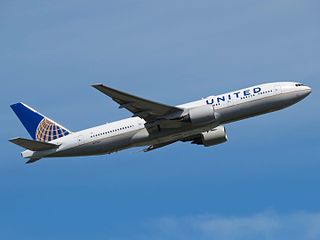
On February 13, 2018, around noon local time, a Boeing 777-222 airplane, operating as United Airlines Flight 1175 (UA1175), experienced an in-flight separation of a fan blade in the No. 2 (right) engine while over the Pacific Ocean en route from San Francisco International Airport (SFO) to the Daniel K. Inouye International Airport (HNL), Honolulu, Hawaii. During level cruise flight shortly before beginning a descent from flight level 360, and about 120 miles from HNL, the flight crew heard a loud bang, followed by a violent shaking of the airplane, followed by warnings of a compressor stall. The flight crew shut down the failed engine, declared an emergency, and began a drift-down descent, proceeding direct to HNL where they made a single-engine landing without further incident at 12:37 local time. There were no reported injuries to the 374 passengers and crew on board and the airplane damage was classified as minor under National Transportation Safety Board (NTSB) criteria.
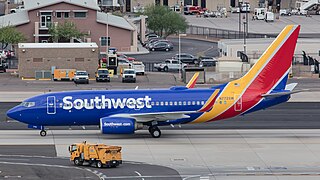
Southwest Airlines Flight 1380 was a Boeing 737-700 that experienced a contained engine failure in the left CFM56-7B engine after departing from New York–LaGuardia Airport en route to Dallas Love Field on April 17, 2018. The engine cowl was broken in the failure and cowl fragments damaged the fuselage, shattering a cabin window and causing explosive depressurization of the aircraft. Other fragments caused damage to the wing. The crew carried out an emergency descent and diverted to Philadelphia International Airport. One passenger was partially ejected from the aircraft and sustained fatal injuries, while eight other passengers sustained minor injuries. The aircraft was substantially damaged.
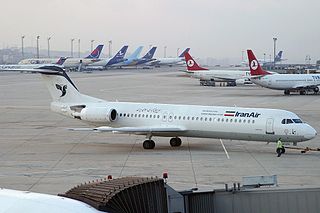
On Saturday 15 September 2001, TAM Linhas Aéreas Flight 9755, a Fokker 100 scheduled domestic passenger flight carrying 88 passengers and six crew, departed Recife/Guararapes–Gilberto Freyre International Airport for São Paulo/Guarulhos International Airport. During the flight, the plane suffered an uncontained engine failure. Fragments of the engine shattered three cabin windows, causing decompression and blowing the passenger in seat 19E partly out of the plane. The passenger blown out of the window did not survive.

On February 20, 2021, United Airlines Flight 328 (UA328/UAL328), a scheduled U.S. domestic passenger flight from Denver to Honolulu, suffered what was technically ruled a contained engine failure despite shedding large pieces of debris, approximately four minutes after takeoff from Denver International Airport (DEN). Parts departing from the engine cowling of the Boeing 777-222 aircraft resulted in a debris field at least 1 mile (1.6 km) long over suburban residential areas of Broomfield, Colorado. Falling debris was recorded by eyewitnesses using smartphone cameras and a dash cam. Debris fell through the roof of a private home and significantly damaged a parked vehicle.
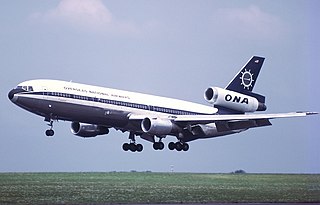
Overseas National Airways (ONA) Flight 032 was a non-scheduled positioning flight operated by Overseas National Airways with a McDonnell Douglas DC-10-30CF. On November 12, 1975, the flight crew initiated a rejected takeoff after accelerating through a large flock of gulls at John F. Kennedy International Airport, resulting in a runway excursion. Of the 139 aircraft occupants, all survived, while the aircraft was destroyed by an intense post-crash fire. The National Transportation Safety Board concluded that the probable cause of the accident was bird ingestion into the right-hand engine, causing an uncontained engine failure that ruptured several landing gear tires and disabled the engine's hydraulic system, in turn partially disabling the spoilers and the landing gear brakes. Contributing to the accident was the resultant failure of the affected engine's thrust reverser and the wet runway. The accident aircraft is claimed to be the largest commercial airliner ever destroyed due to a bird strike.






















